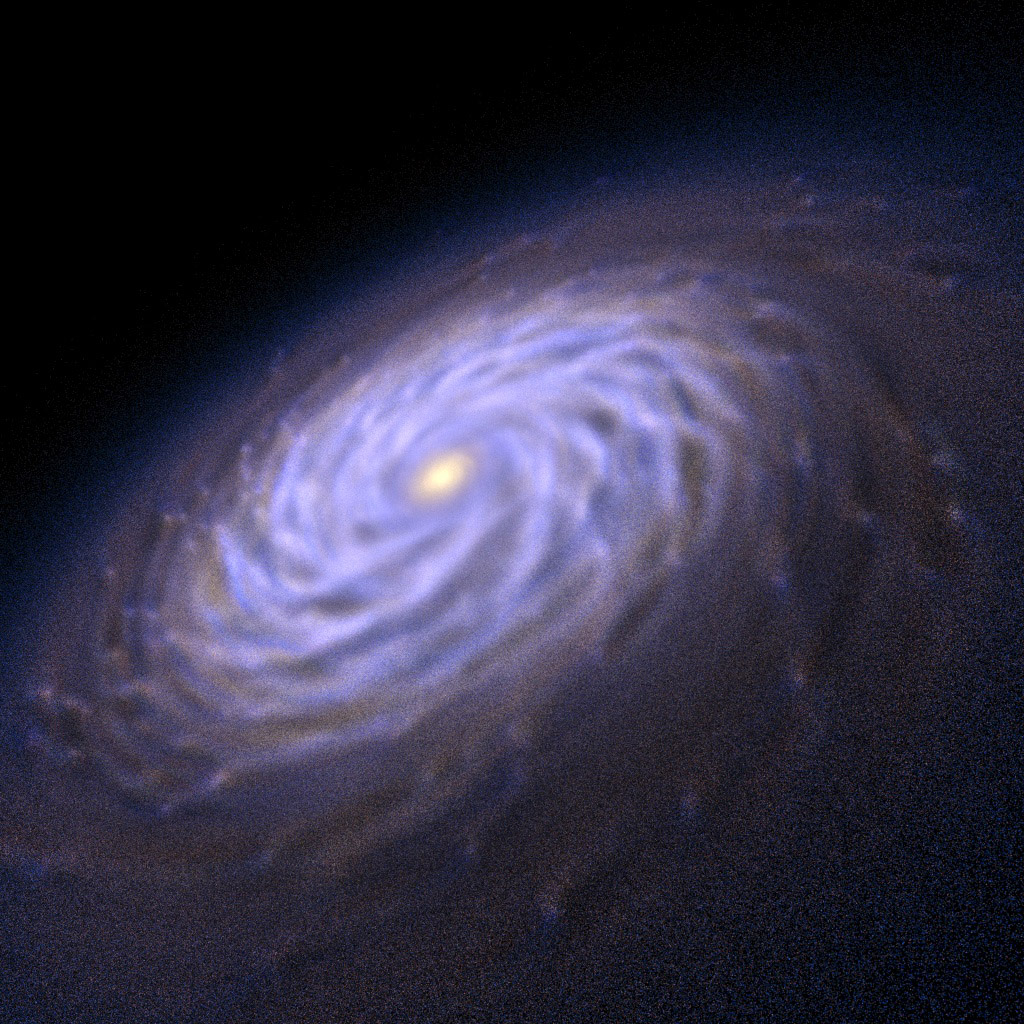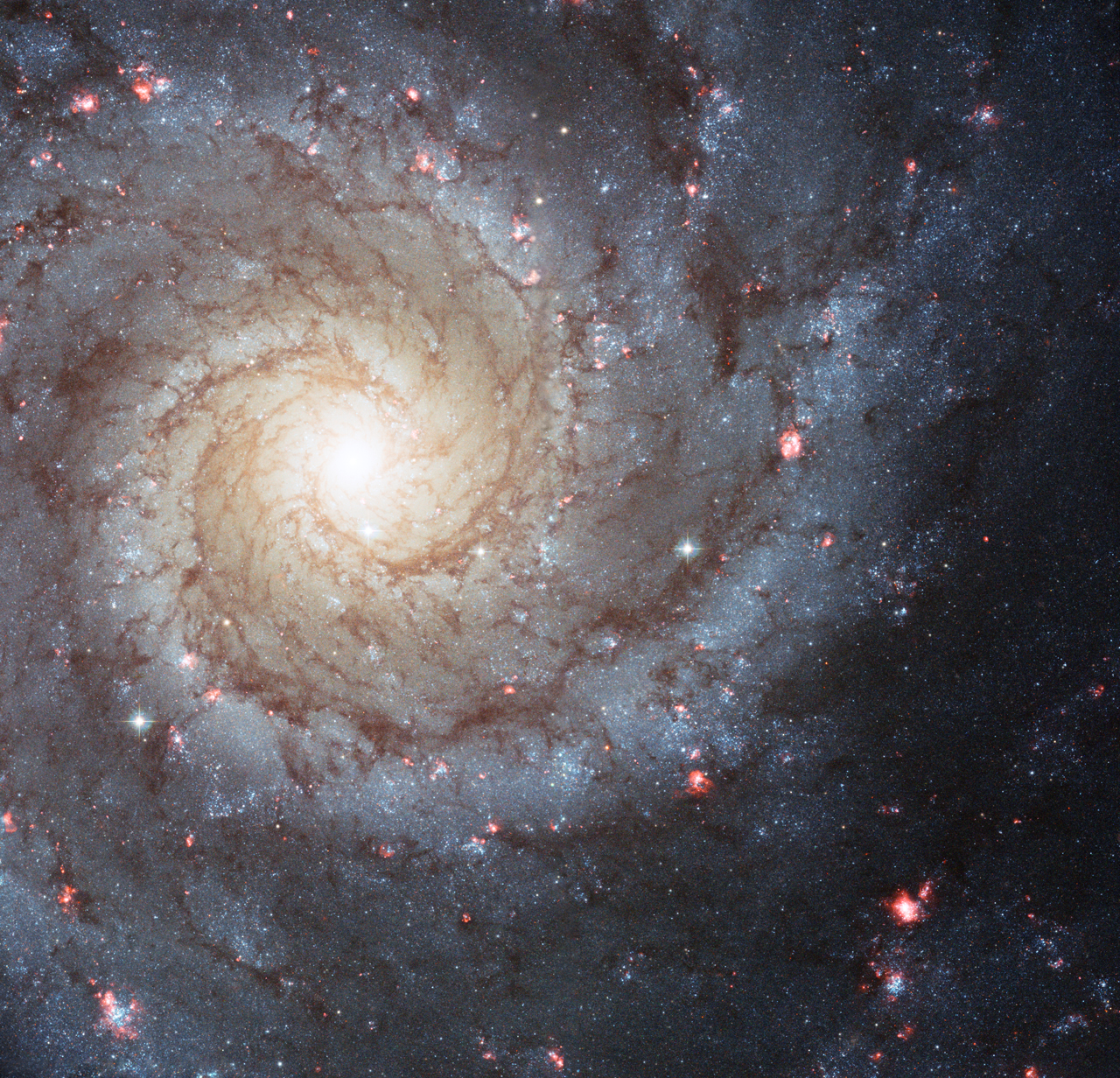Supercomputers Reveal How Spiral Galaxy Arms Grow

New supercomputer simulations show how spiral galaxies like the Milky Way get, and keep, their skinny, star-studded arms.
Spiral galaxies are quite common in the universe. We live in one and 70 percent of our closest galactic neighbors are spiral-shaped, too — flat, rotating disks with arms of stars, gas and dust curling outward from a central stellar bulge.
Researchers have long debated whether the arms in spiral galaxies come and go over time, or whether the material that makes up the arms get jammed up by the effects of gravity and stay put.
To help put some of those questions to bed, scientists used powerful software to model the formation of stand-alone disk galaxies and follow up to 100 million hypothetical stellar particles being tugged at by gravity and other astrophysical forces. The simulations allowed researchers to create a video animation of spiral galaxy evolution to show how their arms form.
"We show for the first time that stellar spiral arms are not transient features, as claimed for several decades," study researcher Elena D'Onghia, a University of Wisconsin, Madison astrophysicist, said in a statement.

The team found that giant molecular clouds, which often serve as star factories, can instigate the formation of spiral arms. While the clouds act as initial "perturbers," the researchers say they also can help sustain a spiral galaxy's arms indefinitely.
"Past theory held the arms would go away with the perturbations removed, but we see that (once formed) the arms self-perpetuate, even when the perturbations are removed," D'Onghia said. "It proves that once the arms are generated through these clouds, they can exist on their own through (the influence of) gravity, even in the extreme when the perturbations are no longer there."
Breaking space news, the latest updates on rocket launches, skywatching events and more!
The research is detailed in the March 20 issue of The Astrophysical Journal.
Follow us @Spacedotcom, Facebook and Google+. Original article on SPACE.com.
Join our Space Forums to keep talking space on the latest missions, night sky and more! And if you have a news tip, correction or comment, let us know at: community@space.com.

Megan has been writing for Live Science and Space.com since 2012. Her interests range from archaeology to space exploration, and she has a bachelor's degree in English and art history from New York University. Megan spent two years as a reporter on the national desk at NewsCore. She has watched dinosaur auctions, witnessed rocket launches, licked ancient pottery sherds in Cyprus and flown in zero gravity on a Zero Gravity Corp. to follow students sparking weightless fires for science. Follow her on Twitter for her latest project.
